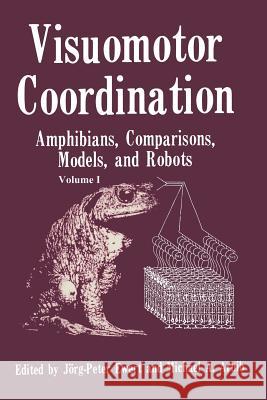Visuomotor Coordination: Amphibians, Comparisons, Models, and Robots » książka
Visuomotor Coordination: Amphibians, Comparisons, Models, and Robots
ISBN-13: 9781489908995 / Angielski / Miękka / 2013 / 923 str.
Visuomotor Coordination: Amphibians, Comparisons, Models, and Robots
ISBN-13: 9781489908995 / Angielski / Miękka / 2013 / 923 str.
(netto: 732,66 VAT: 5%)
Najniższa cena z 30 dni: 765,72 zł
ok. 20 dni roboczych.
Darmowa dostawa!
Various brain areas of mammals can phyletically be traced back to homologous structures in amphibians. The amphibian brain may thus be regarded as a kind of "microcosm" of the highly complex primate brain, as far as certain homologous structures, sensory functions, and assigned ballistic (pre-planned and pre-pro grammed) motor and behavioral processes are concerned. A variety of fundamental operations that underlie perception, cognition, sensorimotor transformation and its modulation appear to proceed in primate's brain in a way understandable in terms of basic principles which can be investigated more easily by experiments in amphibians. We have learned that progress in the quantitative description and evaluation of these principles can be obtained with guidance from theory. Modeling - supported by simulation - is a process of transforming abstract theory derived from data into testable structures. Where empirical data are lacking or are difficult to obtain because of structural constraints, the modeler makes assumptions and approximations that, by themselves, are a source of hypotheses. If a neural model is then tied to empirical data, it can be used to predict results and hence again to become subject to experimental tests whose resulting data in tum will lead to further improvements of the model. By means of our present models of visuomotor coordination and its modulation by state-dependent inputs, we are just beginning to simulate and analyze how external information is represented within different brain structures and how these structures use these operations to control adaptive behavior."











